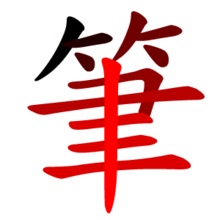 Japanese
Hiragana Katakana Kanji Japanese
Hiragana Katakana Kanji
Japanese language learning
information including:
Hiragana -
pronunciation and writing
Katakana -
pronunciation and writing
Kanji - grades 1-6
(教育漢字 Kyōiku kanji)
Vocabulary -
nouns, verbs, adverbs, and adjectives |
|
|
|
|
| |
 Speaking
Japanese Speaking
Japanese
Speaking Japanese is much easier to learn than what you’ve
probably been led to believe. The writing system, well that’s
another story. The following are the basics of speaking Japanese. |
|
|
|
Main points about spoken Japanese: |
- There are only 5 vowel sounds (a, i,
u, e, o) to remember - see the
pronunciation
page
- Every word in Japanese ends in a
vowel sound, with the exception of words ending in “n” -
see the
pronunciation
page
- All sounds are made by combining a
consonant sound with a vowel sound, again with the
exception of “n” - see the
pronunciation
page
- There are a total of 69 basic sounds
in Japanese, not including combination sounds (some
books and sites list a few more or a few less) - see the
pronunciation
page
- All sounds are represented in
Japanese writing using any of the following:
-
Romaji - Japanese sounds written using English
letters
-
Hiragana - Japanese sounds written in the Japanese
script hiragana
-
Katakana - Japanese sounds written in the Japanese
script katakana (usually used for only foreign or
borrowed words)
-
Kanji
- Japanese sounds written in kanji characters
- A single sound in Japanese can be
written in any of the four ways listed
above but each sound can only be pronounced one way.
- Example: The sound
ki, as in the word
keep, can only be
pronounced one way but can be written in romaji,
hiragana, and katakana. Many kanji also have the
sound ki. The following are
the different ways to write the sound
ki.
|
|
|
Sound in English |
Written in romaji |
Written in hiragana |
Written in katakana |
keep |
ki |
 |
 |
|
|
The sound ki can be written
with many different kanji. Keep in mind most kanji have two
or more pronunciations....The Chinese pronunciation known as
onyomi, and the Japanese pronunciation known as
kunyomi. More about this in the Japanese writing section.
The following are examples of ten kanji that have the sound
ki. |
|
|
Kanji |
Sounds in onyomi |
Sounds in kunyomi |
Meanings |
 |
moku, boku |
ki |
tree
wood |
 |
ki, ke |
iki |
spirit
air |
 |
ki |
shiru-su |
record
write down |
 |
ou |
ki |
yellow |
 |
ki |
kae-ru |
return |
 |
ki |
no kunyomi for
this kanji |
steam |
 |
ki |
no kunyomi for
this kanji |
period of time |
 |
ki |
o-kiru |
awaken |
 |
ki |
yoroko-bu |
rejoice |
 |
ki |
utsuwa |
container |
|
|
|
 Japanese
Hiragana Katakana Kanji
Japanese
Hiragana Katakana Kanji











